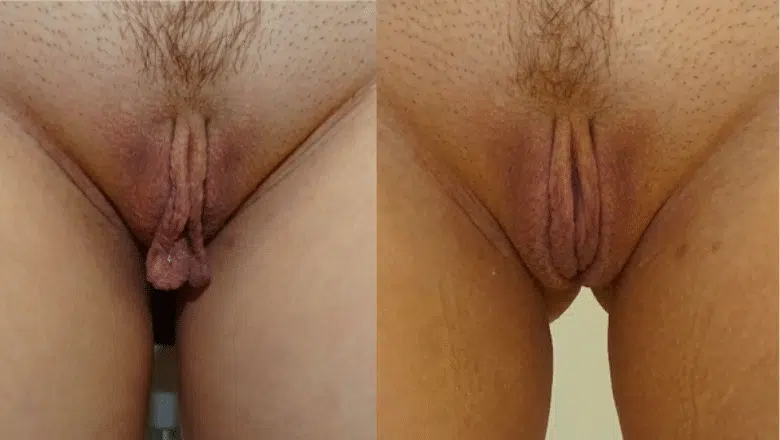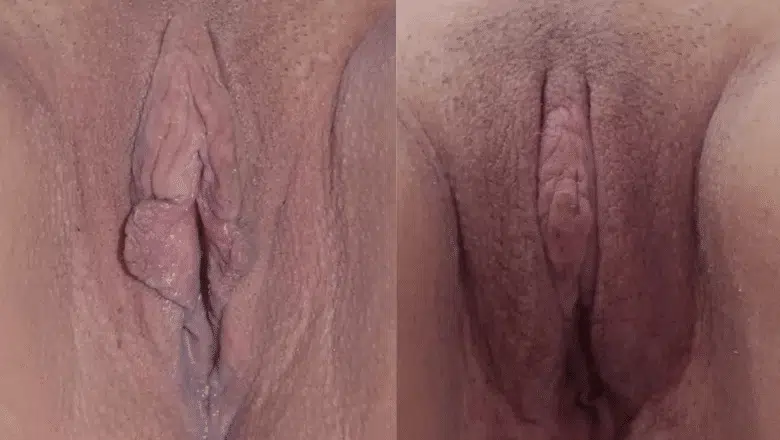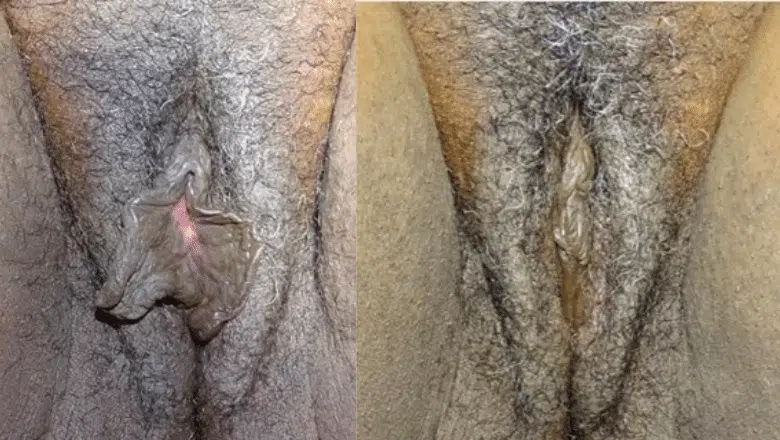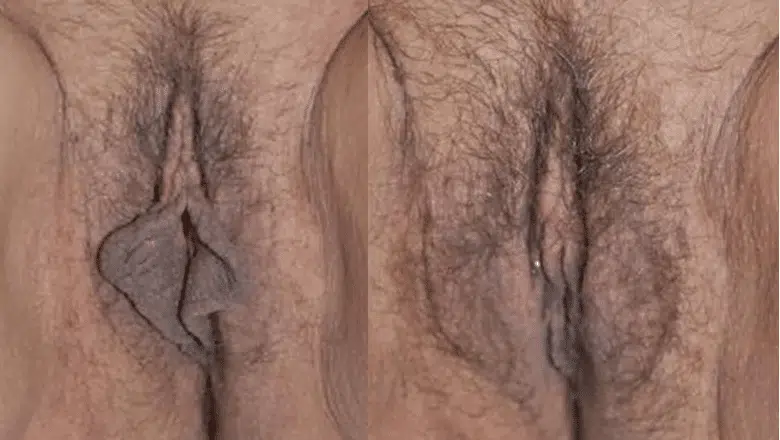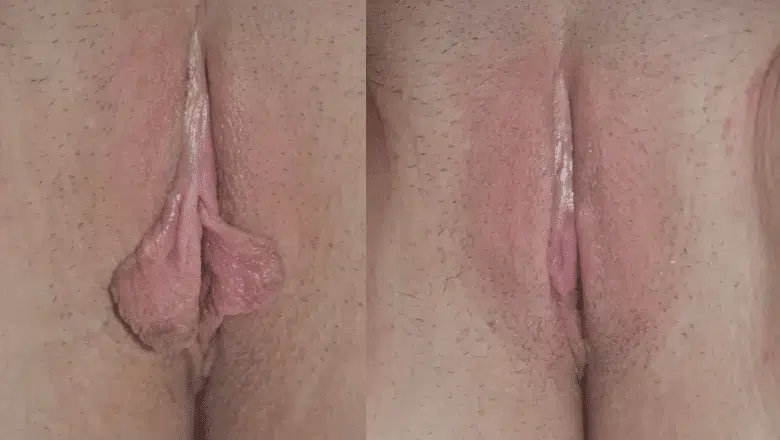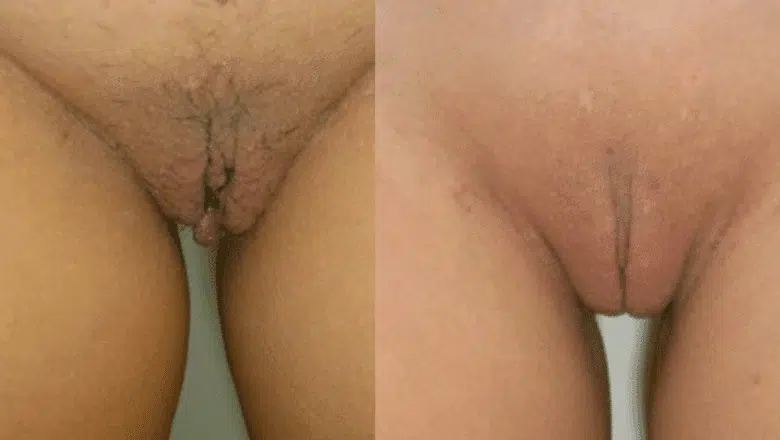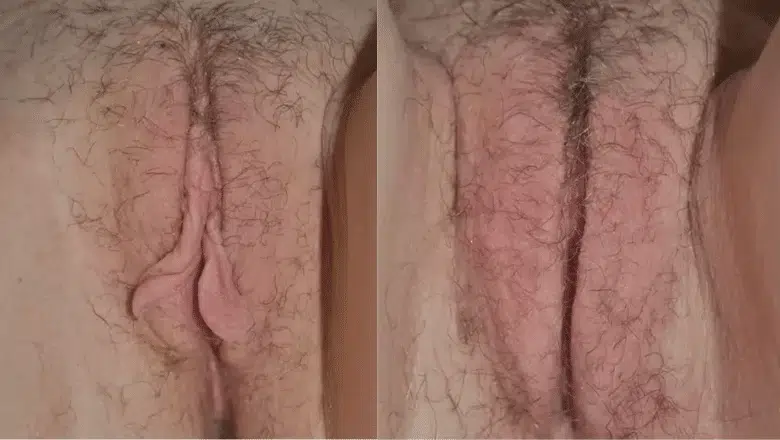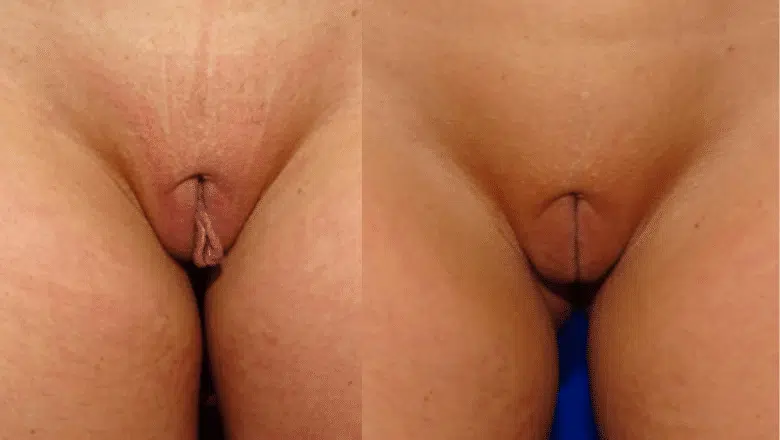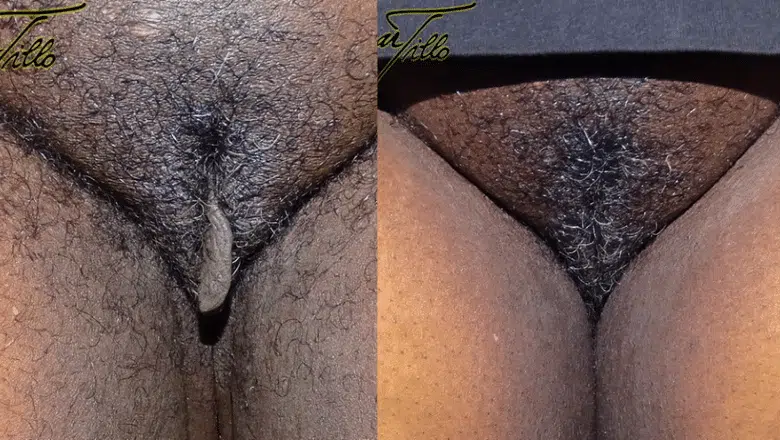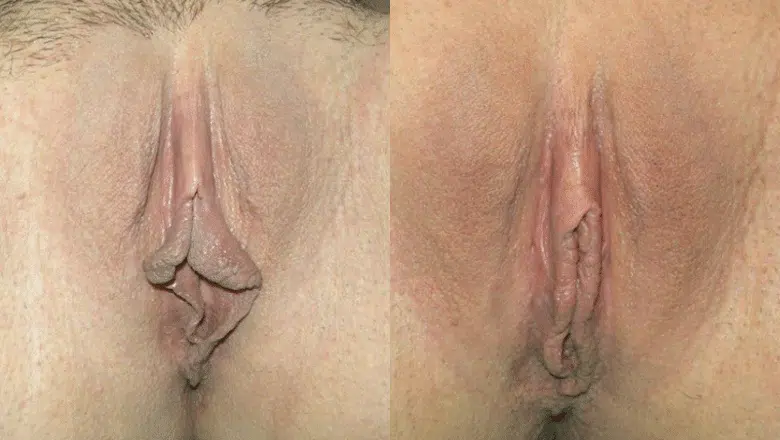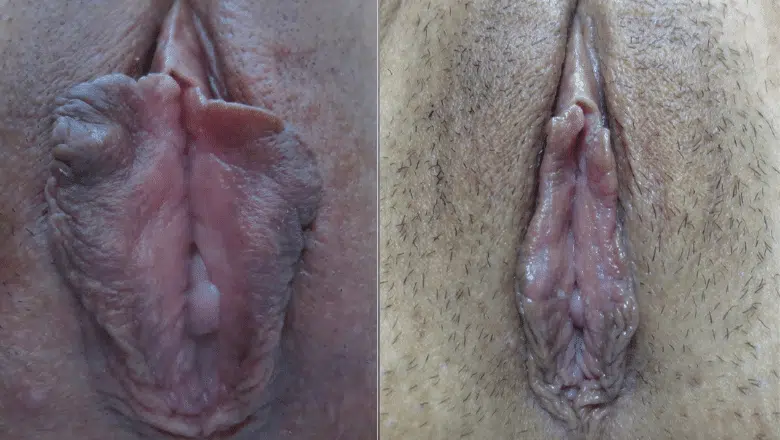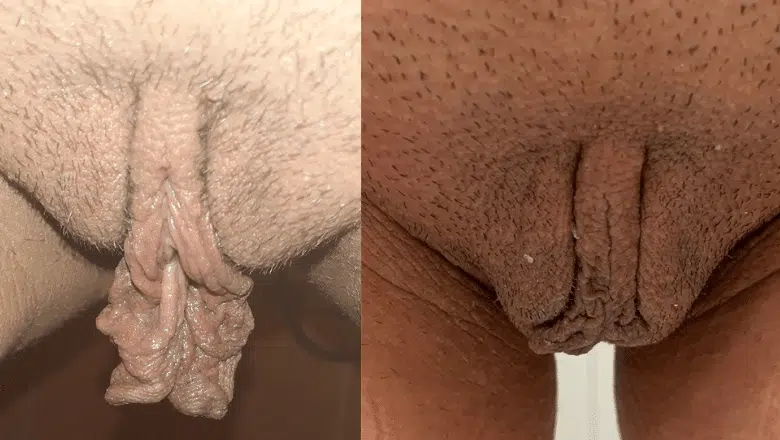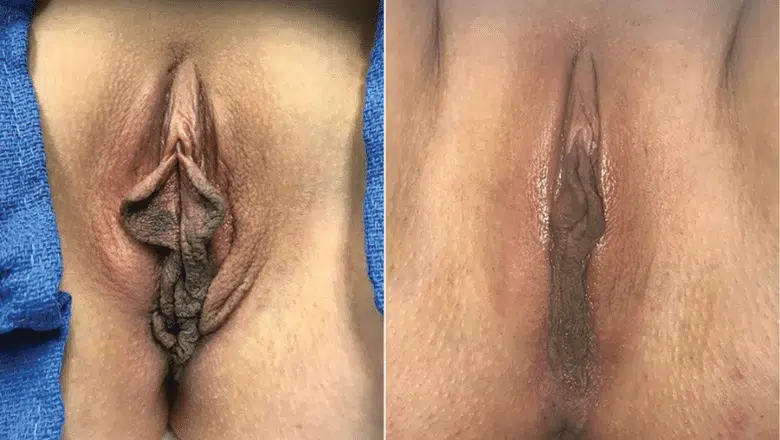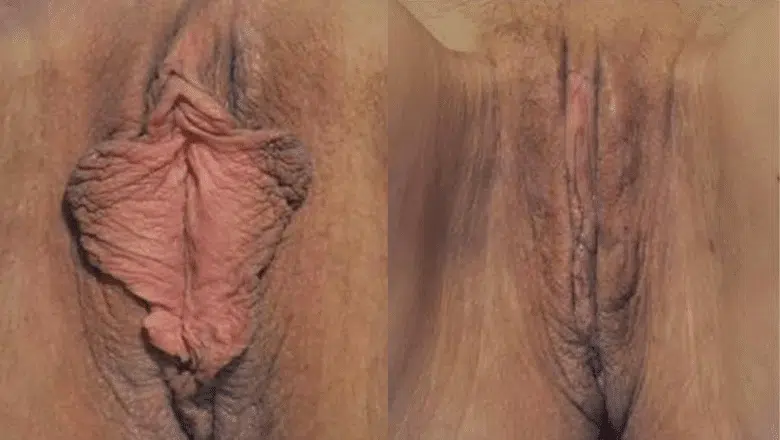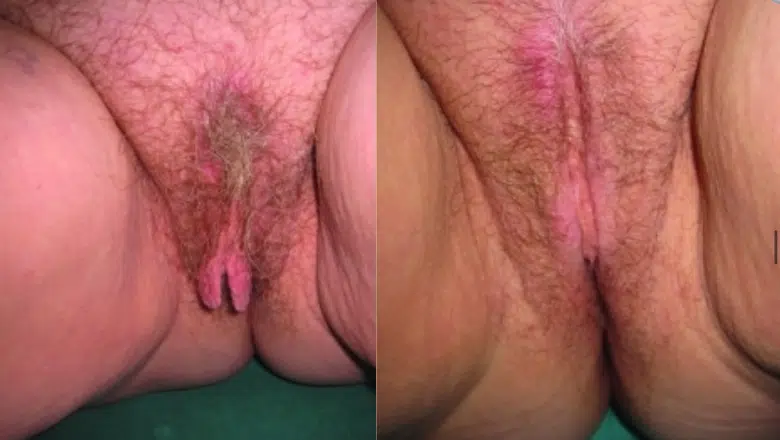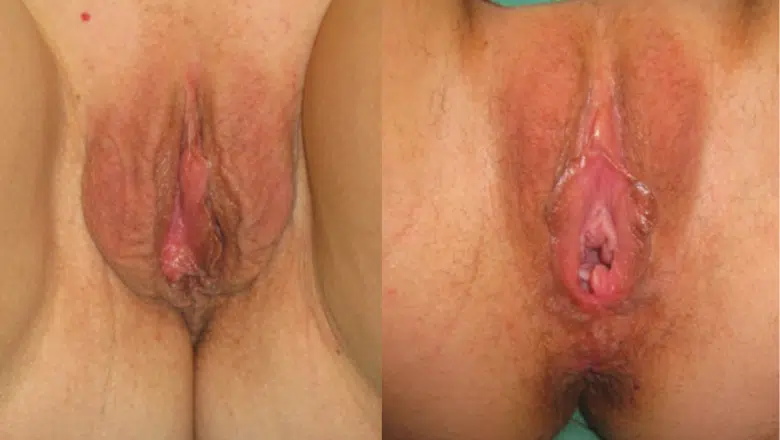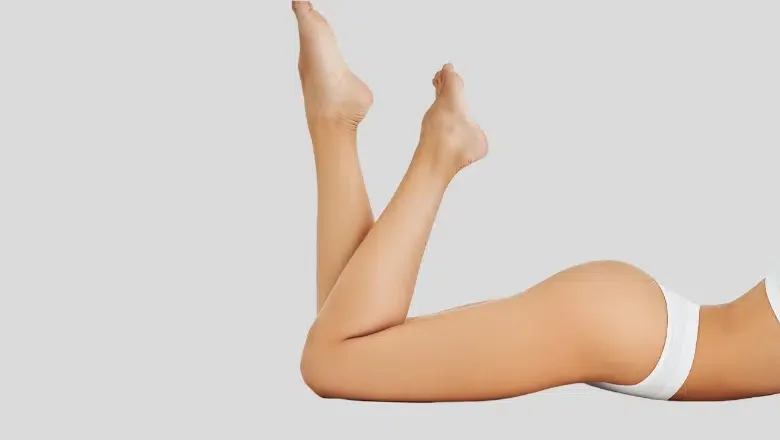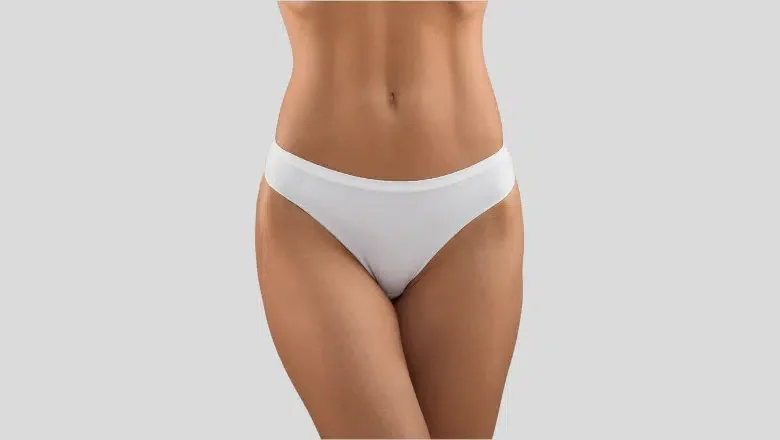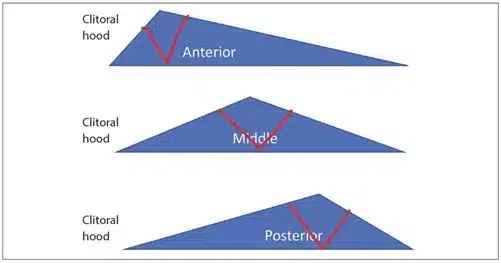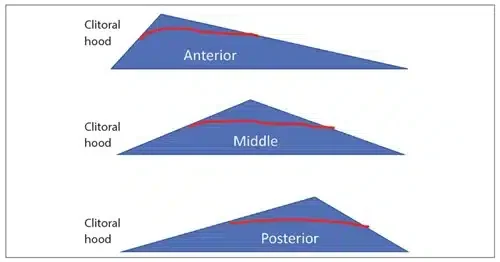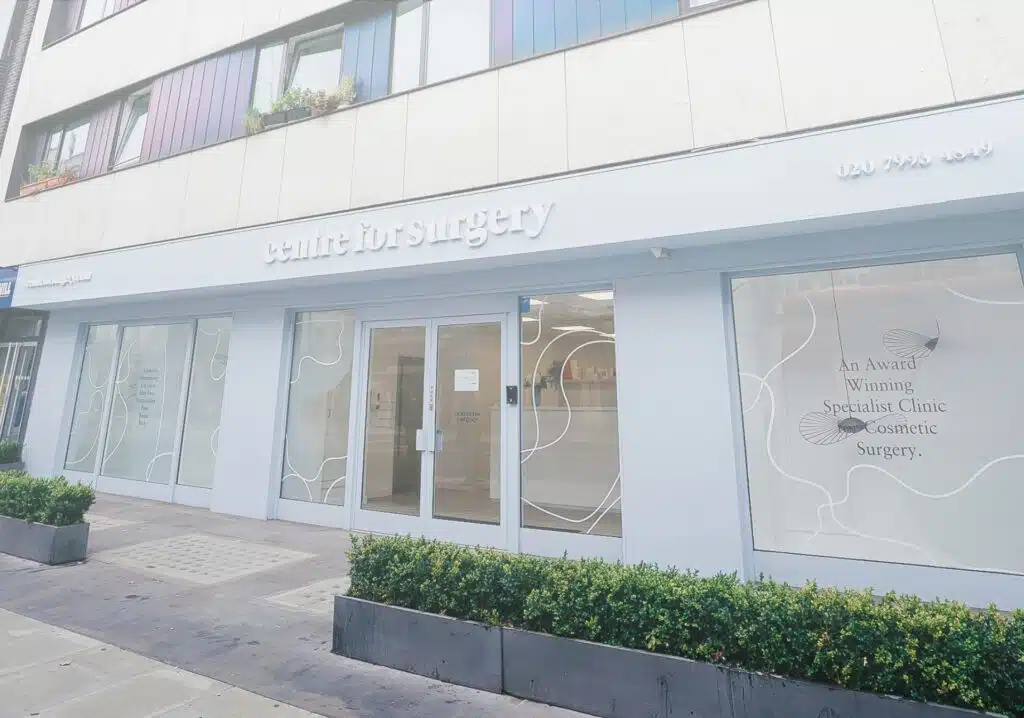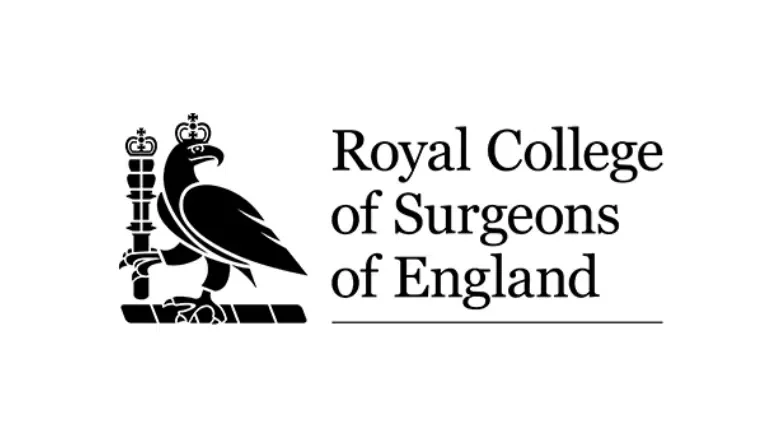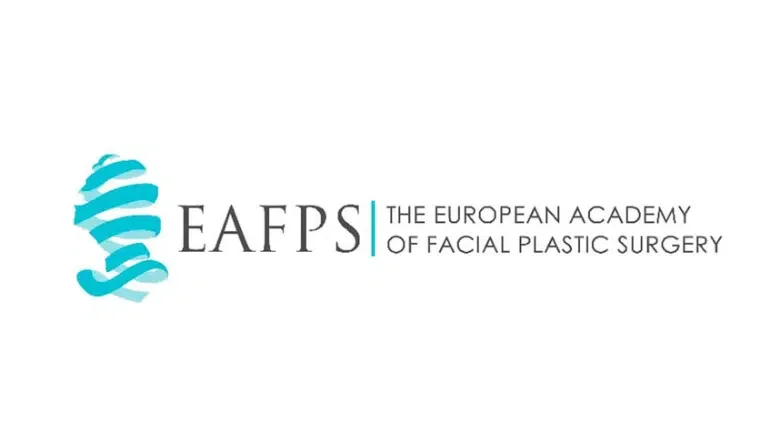What is Labiaplasty?
The size and shape of the labia can be a cause for concern for many women who are unhappy with the appearance of enlarged or misshapen labia. There are two types of labia: labia minora and labia majora. The labia minora are the inner folds that sit on either side of the vagina opening, and the labia majora are the outer folds surrounding the inner labia minora. Large labia, also known as labial hypertrophy, may develop due to genetics, after childbirth or as part of the ageing process. Labiaplasty, also known as labia reduction, is a highly effective and safe procedure that permanently reduces the size of the labia, resulting in an improvement in overall shape and definition.
RELATED: Labiaplasty FAQs – Q&As about Labia Reduction
Labiaplasty surgery or labia minora reduction is a surgical procedure that reduces the size of enlarged labia minora, which are the inner folds of soft tissue located on either side of the vagina. The best technique involves the surgical removal of excess tissue using a scalpel, followed by the use of fine, absorbable stitches to restore the labial edges neatly. Labiaplasty is most commonly performed with local anaesthesia and sedation, although a general anaesthesia may be chosen if you prefer.
Labiaplasty is also commonly requested to reduce the size of prominent labia majora, which are the outer folds of tissue adjacent to the labia minora.
For many adult women, enlargement of the labia minora and/or labia majora can cause aesthetic, functional or psychological issues. Women with enlargement of one or both sides of the labia minora may report increased irritation, inflammatory changes, reduced personal hygiene during menses, and painful intercourse. Many women with labia minora enlargement or asymmetry also report increased anxiety or self-consciousness, embarrassment or feelings of being insecure in sexual relationships or when wearing tight clothing. This has resulted in more requests for surgery of the labia minora and/or labia majora.
RELATED: What is labia reduction?
Our specialists carry out 150 to 200 labia reduction procedures each year, making us one of the most experienced labiaplasty centres in London and the UK. We are committed to treating all labiaplasty patients with dignity, ensuring they feel safe and comfortable throughout this highly delicate and private surgical procedure.
There are three main types of labiaplasty procedures:
- Labia minora reduction
- Labia majora reduction
- Clitoral hoodectomy
Labiaplasty Before & After Photos
More images will be available at your consultation.
RELATED: LABIAPLASTY BEFORE & AFTER PHOTOS
What Conditions Can Labiaplasty Target?
Some of the most common conditions that labiaplasty can correct are:
Enlarged labia minora
The labia minora can become elongated or enlarged for a variety of reasons, including genetics, ageing, childbirth, obesity, sexual activity, injury or hormonal changes.
Irregular labia shape
The labia minora can also have an irregular shape, with one side longer or wider than the other.
Chafing or rubbing
Enlarged or irregular labia can cause chafing or rubbing, especially during physical activity.
Discomfort or pain during sexual intercourse
In some cases, enlarged or irregular labia can cause discomfort or pain during sexual intercourse.
Embarrassment or self-consciousness
Women with enlarged or irregular labia may feel self-conscious or embarrassed about the appearance of their labia.
Benefits of Labia Reduction
Improved Appearance
This procedure can help women gain a more symmetrical and balanced look, boosting their self-confidence and body image.
Increased Comfort
Enlarged labia can cause discomfort during routine activities such as exercise, cycling, or even while wearing tight clothing. By reducing the size of the labia, labiaplasty can significantly improve physical comfort.
Psychological Well-being
Dissatisfaction with the appearance of one’s labia can lead to embarrassment, self-consciousness, or even anxiety in intimate situations. By improving the appearance of the labia, labiaplasty can help alleviate these psychological concerns, leading to enhanced mental well-being.
Relief from Physical Symptoms
In certain cases, enlarged labia can lead to symptoms such as chronic irritation, hygiene issues, or urinary tract infections. Labiaplasty can reduce the size of the labia to alleviate these symptoms.
Boosted Self-Esteem
Body dissatisfaction can significantly impact a woman’s self-esteem. By addressing this concern, labiaplasty can contribute to enhanced self-esteem and a better overall quality of life.
Am I Suitable?
The best way to determine if you are suitable for labiaplasty is to have a consultation with a qualified surgeon who specialises in genital surgery. During your consultation, you can discuss your concerns, and the surgeon can examine your labia to determine if the procedure is appropriate for you.
There are a few factors that can affect your suitability for labiaplasty, including:
Medical history
Certain medical conditions, such as uncontrolled diabetes, may make you an unsuitable candidate for labiaplasty.
Age
You must be 18 years or older to have this procedure at Centre for Surgery.
Pregnancy and childbirth
Pregnancy and childbirth can change the size and shape of the labia, and labiaplasty may not be recommended if you are pregnant or planning to become pregnant in the near future.
Expectations
It’s important to have realistic expectations about the outcome of labiaplasty. The procedure can improve the appearance and reduce discomfort, but it won’t change your sexual function or sensation.
Types of Labiaplasty
Wedge Labiaplasty
Wedge labiaplasty is a surgical technique used to reduce the size of the labia minora (the inner vaginal lips).
The wedge labiaplasty technique involves making a V-shaped incision in the labia minora, removing a wedge of tissue, and closing the incision with sutures.
The advantages of wedge labiaplasty include a shorter recovery time, minimal scarring, and improved sensation in the genital area.
Trim Labiaplasty
Trim labiaplasty is also a surgical technique used to reduce the size of the labia minora (the inner vaginal lips).
The trim labiaplasty technique involves making a straight incision along the edge of the labia minora, removing a strip of tissue, and closing the incision with sutures.
Deepithelialisation technique
For mild to moderate labial tissue resection, the de-epithelialisation technique may be an appropriate option. The method reduces the length of the labia whilst also preserving the labial border. This can create a more aesthetically pleasing appearance in addition to correcting the functional symptoms that many women experience. The downside is that it is only applicable for minimal degrees of labia minora enlargement.
Whichever technique is used, once the desired level of correction has been achieved to achieve a youthful appearance, our surgeons use absorbable sutures to ensure correct healing. With extensive experience as skilled cosmetic gynaecologists, our surgeons are familiar with the diverse range of labia minora and labia majora appearances, and no single technique can be used in a blanket fashion for every patient. The key is a thorough evaluation in a private consultation to develop a customised treatment plan based on a patient’s primary concerns.
How to Prepare for Labiaplasty
Important pre-surgery requirements:
- If you smoke, you’ll need to stop for at least two weeks before your labiaplasty procedure. Smoking significantly impairs microcirculation and slows the wound healing process, which can compromise your results and recovery.
- All medications, both prescribed and over-the-counter, will be carefully reviewed and may be paused.
- Whether your procedure is performed under local or general anaesthetic, it’s mandatory to arrange for a responsible adult to escort you home by car or taxi. You must not travel home on public transport after labiaplasty surgery for your safety and comfort.
About the procedure
Labiaplasty is a highly specialised surgery and requires tremendous attention to detail.
If you choose to have the procedure under a local anaesthetic, you will also have the option of oral sedation, which may make you feel sleepy and, hence, feel more relaxed before the injection of local anaesthetic.
You can also choose a general anaesthetic, where you’ll be asleep throughout the procedure under the expert supervision of an anaesthetist.
The decision to have local or general anaesthesia is always your choice, although your surgeon may recommend a general anaesthetic in complex or revision cases.
Several surgical methods are available for labiaplasty surgery. Your surgeon will discuss with you the most appropriate technique applicable to your specific needs.
RELATED: Is labiaplasty painful?
Recovery after Labiaplasty
After the labiaplasty procedure, you may experience some pain and discomfort in the genital area. Bruising and swelling are common side effects. This may last for several weeks. You can use ice packs to reduce swelling or take pain medication to help alleviate discomfort.
You may need to take 3-5 days off work, and you will need to avoid any heavy exercise for 10 days. You will be able to resume your regular sexual activity about 6 weeks later. It is essential to keep the genital area clean during the recovery period to minimise the risk of infection.
RELATED: How to reduce labiaplasty swelling
The sutures used for labiaplasty surgery are fully dissolvable and will be naturally absorbed by the body. The vast majority of patients report that the procedure was significantly less painful and easier than they had anticipated.
RELATED: What is labiaplasty recovery like?
Aftercare Tips
Here are some aftercare tips to keep in mind:
Avoid Tampons
Inserting a tampon could potentially irritate the surgical site and disrupt the healing process.
Sitz Baths
Incorporate daily sitz baths into your routine to help reduce swelling and alleviate discomfort.
Ice Packs
To help manage swelling and pain, consider applying ice packs to the area. Remember to place the ice pack on your underwear, rather than directly on the skin, to prevent frostbite. Limit each application to 15-20 minutes at a time.
Elevate Your Behind While Sleeping
When lying down, elevate your behind using a few small pillows. This can help reduce swelling by improving blood flow and fluid drainage from the surgical area.
Loose Clothing
During your recovery period, opt for loose-fitting clothes. Tight clothing could potentially restrict blood flow to the surgical site, hindering the healing process.
How much does a Labiaplasty cost?

RELATED: How much does a labiaplasty cost?
Finance options for labiaplasty, including 0%
We also offer finance options via our specialist finance partner, Chrysalis Finance, including 0% options. Please speak to one of our patient coordinators if you wish to consider this.
Why Choose Centre for Surgery?
Quality, Experience, and Unmatched Care
When it comes to highly personalised and sensitive procedures such as Labiaplasty, the choice of your healthcare provider matters enormously. Centre for Surgery, located at the heart of London, is a leading specialist in plastic surgery, offering a comprehensive, patient-focused approach that sets us apart.
Our Expertise
Our team of renowned surgeons have years of experience and are trained in the most advanced techniques. This ensures not just an aesthetic result, but also functional outcomes that make a real difference in the quality of your life.
Tailored Approach
Every patient is unique. At Centre for Surgery, we offer bespoke treatment plans that are tailored to your individual needs and aesthetic goals.
State-of-the-Art Facilities
Our clinic boasts state-of-the-art facilities and medical equipment, meeting the stringent UK healthcare regulations, to ensure you receive the best possible care in a comfortable, hygienic setting.
Contact Us for a Personalised Consultation
If you’re considering Labiaplasty, contact us today to book your consultation.
📞 Phone: 0207 993 4849
📧 Email: contact@centreforsurgery.com
📍 Address: 95-97 Baker Street, London W1U 6RN
To know more about Labiaplasty or any other procedures, check out our Plastic Surgery Blog for a plethora of information and expert opinions.
Choose Centre for Surgery for a life-changing experience crafted just for you.
FAQs
-
What Problems can Large Labia Cause?Women with excessively large labia can experience both physical and emotional challenges that significantly impact their quality of life.
Physical problems include:
Catching on clothing and swimwear, causing discomfort
Visible outline when wearing tight-fitting clothes
Pain during sexual intercourse
Discomfort during exercise and physical activities
Emotional impact: Large labia can cause psychological distress, including embarrassment and, in some cases, depression due to self-consciousness about their appearance. -
What is Labia Reduction?Labiaplasty also known as labioplasty is a surgical procedure designed to reduce or reshape the size of the labia minora which are the smaller inner lips of the vulval area or the labia majora which are the larger outer lips of the vulval area. A labiaplasty differs from a vaginoplasty which is a surgical procedure designed to tighten the vagina. Labiaplasty is performed on the external genitalia only.
-
Does labiaplasty reduce sensation?No, labiaplasty is not intended to reduce sensation in the genital area. In fact, many women report the opposite effect - increased sensation and improved sexual satisfaction following the procedure. The procedure is designed to preserve nerve function while improving both comfort and aesthetics.
-
How old do you have to be to get labiaplasty in the UK?In the UK, most reputable surgeons require patients to be at least 18 years old before considering labiaplasty. This age requirement reflects the legal age of adulthood in the UK, when individuals are considered to have the capacity to make fully informed decisions about cosmetic procedures.
-
Will I be able to pass urine right after a labia reduction? Yes, you will be able to urinate immediately following a labiaplasty or labia reduction surgery. However, there may be some discomfort in the area due to the effects of the surgery and the healing process.
To alleviate this, you may be advised to pour lukewarm water over the area as you urinate, which can dilute the urine and lessen any stinging sensation. -
Can I go home the same day as my labia reduction surgery?Yes.
Labiaplasty is considered a minimally invasive surgical procedure that does not have a significant impact on your body. -
How soon can I see results after labia reduction?Generally, most patients can expect to see the results from the labiaplasty procedure after 2 to 3 weeks. Final results can be expected to be visible by the three-month stage.
-
How long does Labiaplasty take to heal?The healing time for Labiaplasty can vary from person to person, but generally, it takes approximately six to eight weeks to heal completely. During this time, it is normal to experience some swelling, bruising, and mild discomfort.
-
Will there be scarring after my labiaplasty procedure?While any surgical procedure has the potential for some scarring, the good news is that labia minora tissue has unique healing proper
Minimising scar visibility: Surgeons skilled in labiaplasty use specialised techniques designed to minimise scarring and strategically place incisions in the most discreet locations possible.
Natural healing process: Over time, labiaplasty scars typically fade significantly and blend naturally with the surrounding tissue, becoming barely perceptible.
Aftercare: Post-operative care plays a crucial role in minimising scar visibility. Following your surgeon's instructions carefully - including proper wound cleaning, activity restrictions, and prescribed ointment application - ensures optimal healing and helps achieve the most discreet scarring possible.
Most patients find that any minimal scarring is well worth the improved comfort and confidence they gain from the procedure. -
How long will I need to take off after labiaplasty?Most patients need to take at least three days off work following labia reduction surgery, though this can extend to a full week depending on your occupation and individual healing.
Work considerations:
Desk-based jobs: Typically require 3-4 days off work
Physically demanding occupations: Require a full seven days off work to avoid complications
Jobs involving lifting or extensive movement: May need additional time for comfortable return
Planning for adequate time off ensures you can focus on healing properly without the stress of returning to work too early, ultimately leading to better results and a more comfortable recovery. -
How long after Labiaplasty can I take a bath?You can typically shower the day after Labiaplasty, but it is important to avoid jumping in pools or hot tubs for approximately eight weeks after the surgery. It is crucial to follow your surgeon's specific post-operative instructions regarding bathing and keeping the surgical area clean and dry.
-
When can I start exercising after labiaplasty surgery?The timeline for resuming exercise following a labiaplasty procedure typically ranges between one to two months. However, this can vary from one individual to another as everyone's body responds and heals differently.
-
When can I have sex after labiaplasty?It is best to wait for approximately six to eight weeks before engaging in any sexual activity following Labiaplasty. This timeframe allows for proper healing and reduces the risk of complications. It is essential to follow your surgeon's guidance and have a discussion about when it is safe to resume sexual activity.
-
Can you get labiaplasty on the NHS?Labiaplasty is generally not available on the NHS (National Health Service) for purely cosmetic reasons. The NHS typically covers surgical procedures when they are considered medically necessary to address functional issues or alleviate physical discomfort. However, if labiaplasty is deemed medically necessary by your doctor, such as in cases where it causes significant physical or psychological distress, and you meet the strict eligibility criteria, it may be possible to have the procedure covered by the NHS. It is important to consult with your doctor and discuss your specific circumstances to determine if you meet the criteria for NHS coverage.
-
Will UK private health insurance cover a labiaplasty?Private health insurance may cover Labiaplasty if it is deemed medically necessary and meets the criteria set by your insurance policy. However, coverage can vary depending on the terms and conditions of your specific insurance plan. It is important to review your policy, including any exclusions or limitations related to cosmetic procedures, and contact your insurance provider directly to inquire about the coverage for Labiaplasty.
-
What is included in my treatment package?As many preoperative consultations with your surgeon as you like to make sure the labia reduction procedure is right for you
The treatment at a specialist day surgery facility recently rated ‘Good’ by the CQC
24/7 clinical support from your surgeon for the first 48 hours, and our expert postoperative support team
Your very own dedicated patient coordinator
In-depth preoperative medical assessment to make sure you are fully fit for your procedure
Exceptionally high standards of postoperative care are described as ‘outstanding’ by the CQC, with regular telephone and face-to-face checks.


